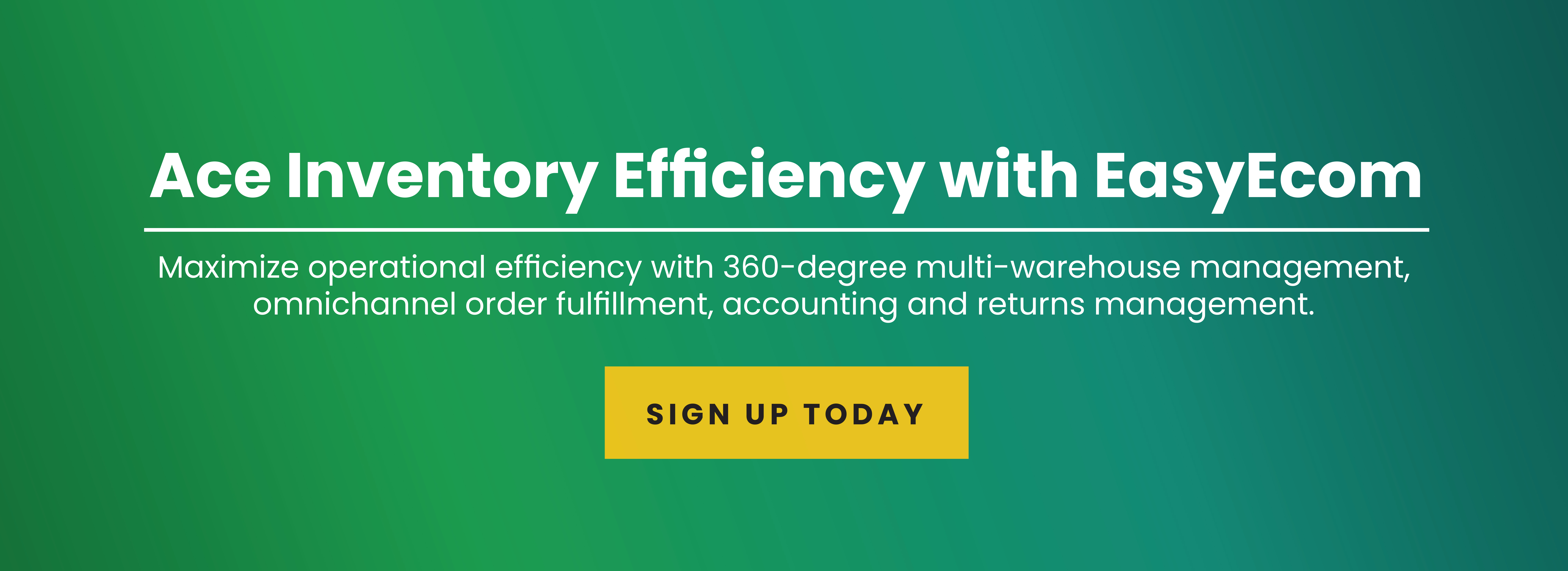If you are an eCommerce distributor of goods, you may face seasonal inventory challenges one-time, or repeatedly across the year. The term “seasonal inventory” refers to the stock that is bought, gathered, or kept in order to meet the rising demand of any given season, such as National holidays, Diwali, or Festive Weekends.
Seasonal inventory differs from cycle stock (typical working stock) and safety stock since it is stored in excess to reduce the risk of stockouts brought on by unforeseen changes in supply and demand. And certainly, a company can maintain seasonal and safety inventory simultaneously.
Let’s get to our list of Seasonal Inventory Challenges for a better lead-up to the forthcoming holiday season.
What Is Seasonal Inventory?
The term seasonal inventory refers to products whose demand varies throughout the year due to the weather, special occasions, or holidays. Your sales during these times will reflect this change in demand, which will affect your amount of stock.
If your product, say, wine has a continuous demand, you’ll observe consistent sales throughout the year. Demand will differ depending on what time of the year and event it is, meaning that consumers won’t stop buying altogether but will alter their purchase behavior and considerations. For example, sales for red wine will soar in comparison to white if the holiday being celebrated is Thanksgiving or Christmas.
Challenges Due to Seasonal Inventory

Follow past trends and make future plans
What is the most effective method for determining when to phase in and out seasonal inventory? your past sales. Pay close attention to your monthly sales volume and determine when occasions or holidays coincided with any significant peaks and valleys. You get information from analytics tools and inventory management systems throughout the entire year for all of your marketplaces. This provides you with a fast picture of previous trends, which will aid in your decision-making regarding your inventory.

Purchase order processing should be automated
If you frequently find that you exhaust inventory more quickly than you anticipated, try creating a system that enables you to automatically generate a buy order when stock levels decline.(again, hurrah for more sales!). It’s astonishingly easy to lose track of when your inventory is running short, so make sure your inventory management solution sends you low-stock alerts so you can place orders with suppliers right away.

Use of Drop Shipping
If you aren’t making your own goods, you may wish to use a drop shipper for seasonal items. Drop shipping is the practice of having a supplier from a different company handle your inventory and execute orders. Although the buyer purchases from your shop directly, the drop shipper processes the order. Without having to take on the operational process yourself, this frees up space in your warehouse and offers you a greater understanding of what clients want.

Test different channels’ inventory levels
In various locations, shoppers behave differently. Experiment with your marketing strategies (such as sponsored or organic social media initiatives) across all of your online sales channels to better understand what moves inventory and where. You’ll have a better understanding of your seasonal inventory flows if you analyse the kinds of things that typically move the needle.

Creative product positioning
Consider the scenario where the current season has officially begun but you still have a tonne of last season’s merchandise on hand. Examine other innovative marketing techniques to move last season’s merchandise off your shelves before you throw in the towel. In the fashion world, this is frequently referred to as “transitional” clothing. Fashion-focused businesses will combine two separate seasonal things to help their customers get through the uncomfortable midseason. Additionally, this is an excellent chance to show off your ingenuity to current clients, winning them over even more.

Find out what’s popular on Google and social media
Monitoring what’s popular on social media and in search engines might help you predict seasonal inventory spikes. Take a look at what other companies are doing to advertise comparable products on Facebook, Twitter, and Instagram. Then consider how you might customise your own initiatives to stand out from the crowd and sell more of a specific item.

Reduce prices to reduce inventory
Whatever the season, consumers are constantly looking for a good offer. Consider holding clearance sales or off-season discounts if you’re worried about being stuck with too much inventory. Additionally, this has the advantage of making your deal stand out rather than getting buried in a sea of discounts throughout the major holidays.
The process of managing seasonal inventory can be difficult and time-consuming. Retailers must, however, outperform the competition in order to increase sales. Retailers can handle seasonal changes and maintain healthy inventory levels with the correct inventory management approach. Further, they can track seasonal trends and alter their inventory levels with the aid of modern merchandising tools. While preventing overstock of less popular items, automatic replenishment of fast-selling items can ensure that popular items are constantly in stock. Inter-store transfers can be used to maintain stable inventory levels at all times, redistribute inventory in response to variations in demand, or prevent stock outs.

.png)


.png)








